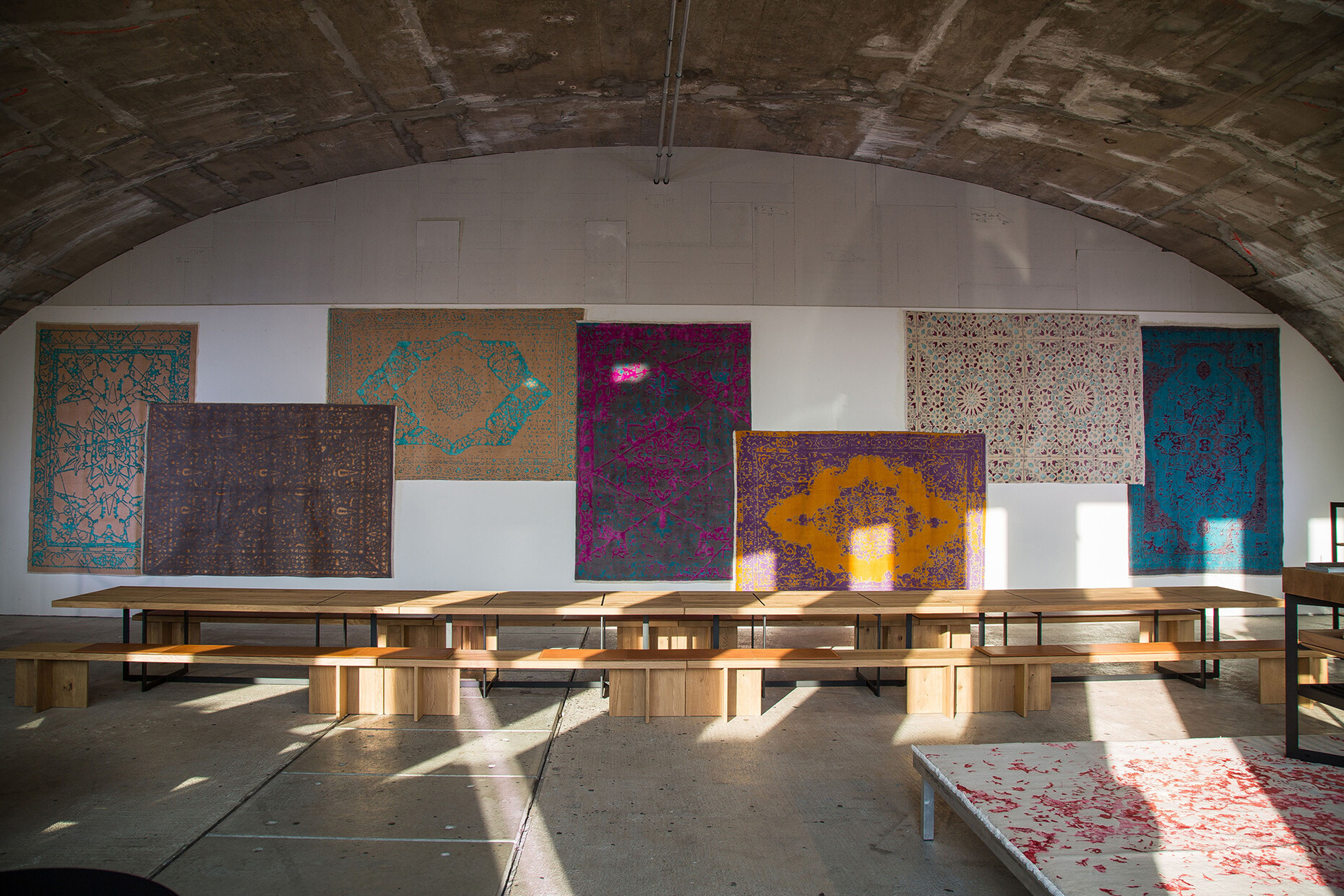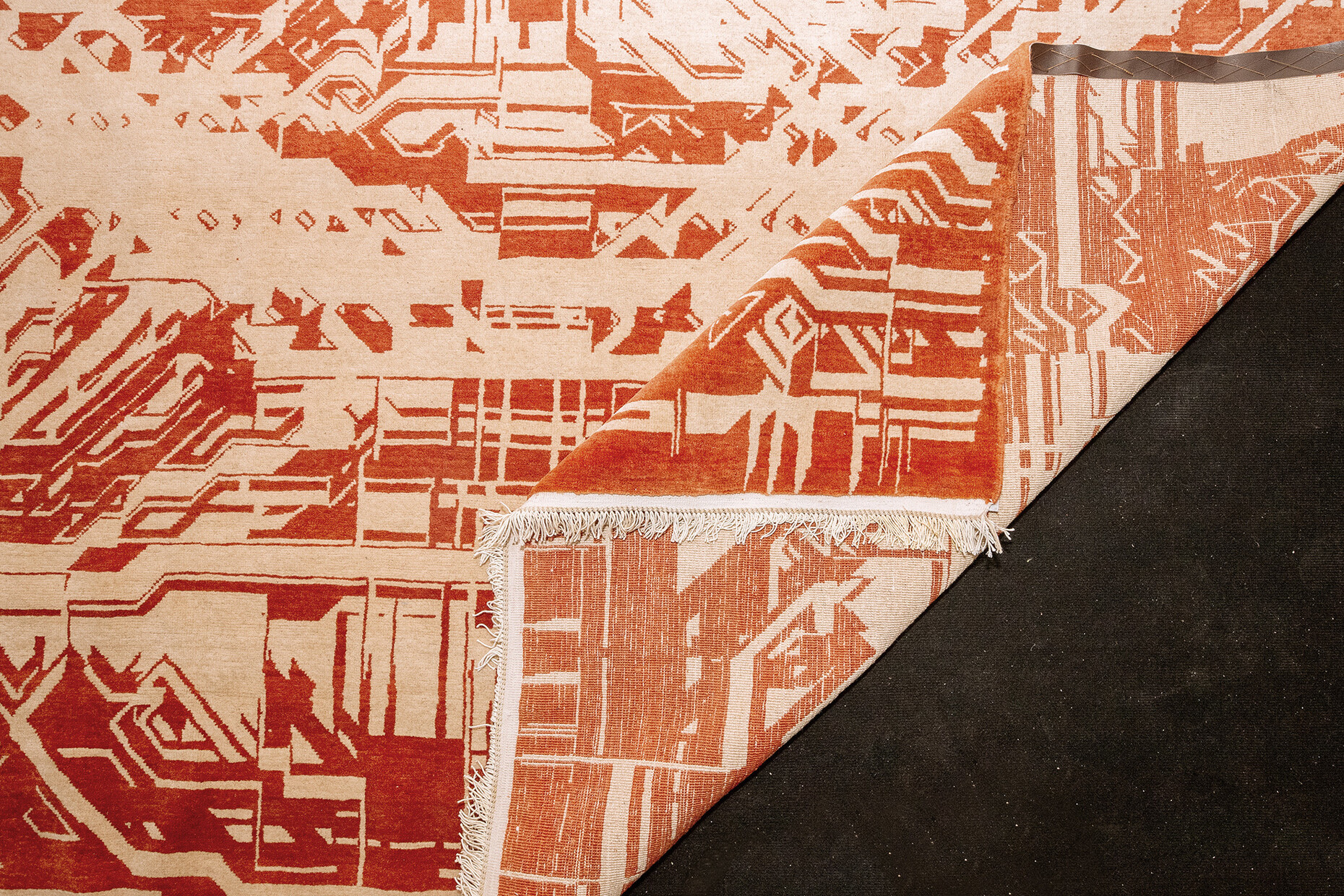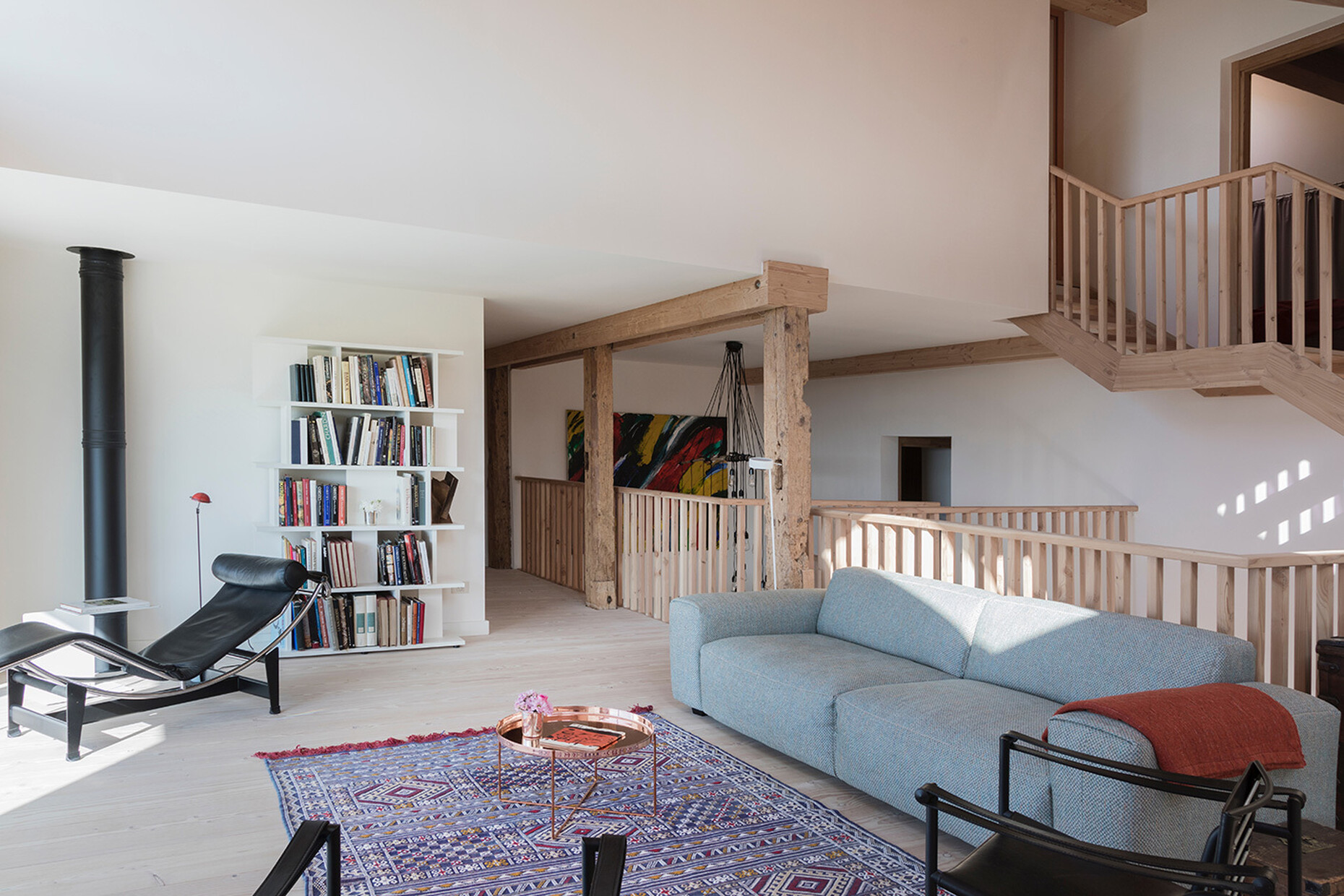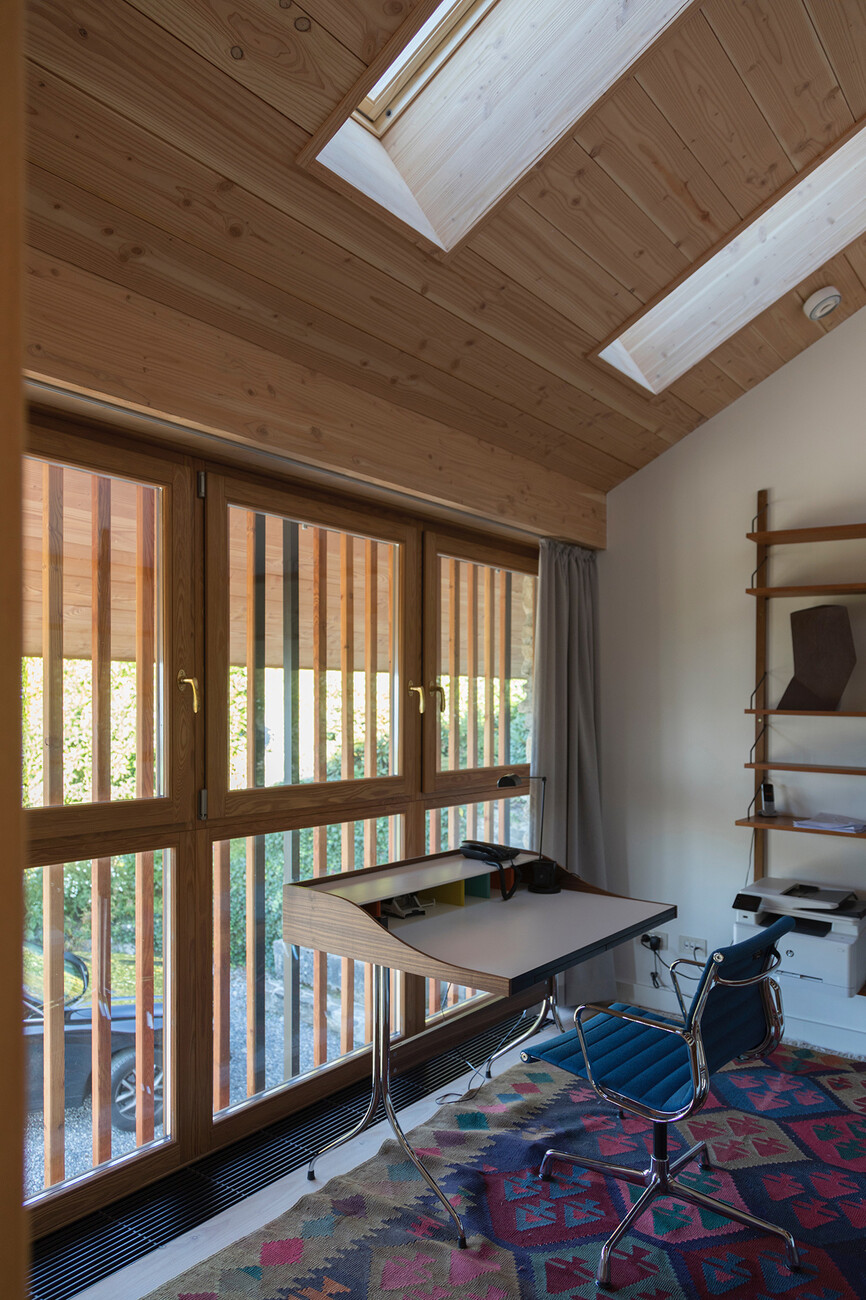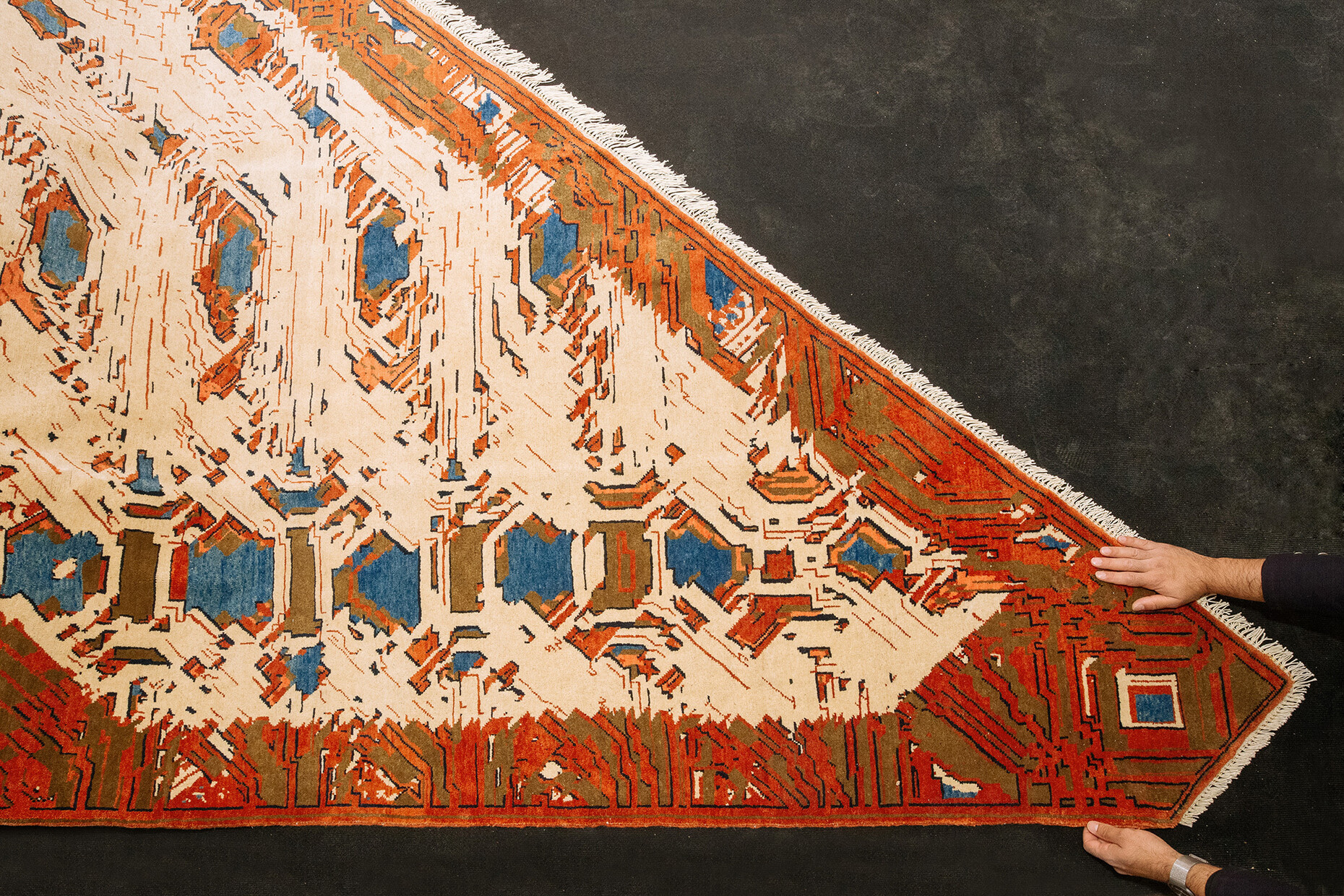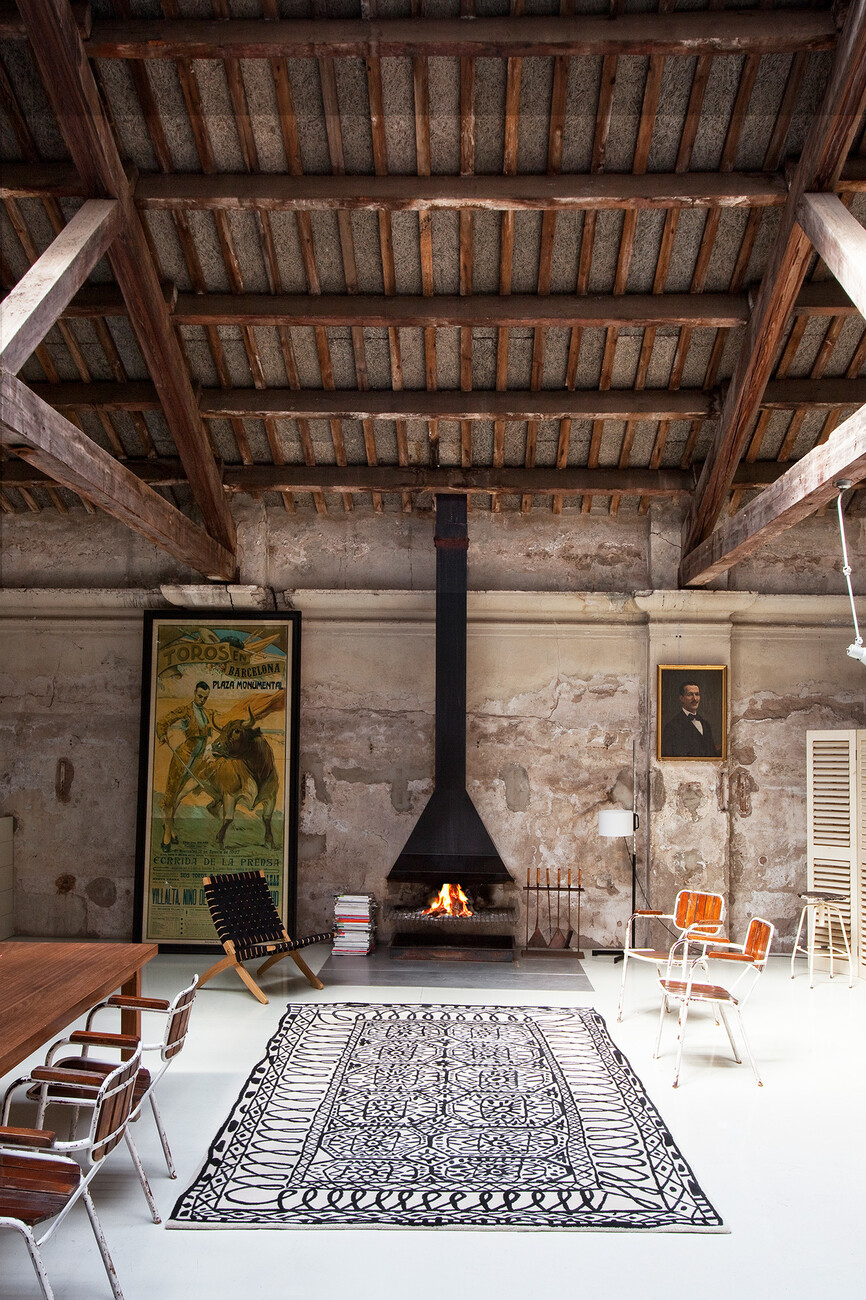Domotex
Oriental carpet 2.0
Lucky the person who inherits an old oriental carpet nowadays! After all, nowadays when we get the feeling that a new product comes on the market every few seconds vintage objects have their own, very special status – something that even applies to floor coverings.
Accordingly, it comes as no surprise that oriental carpets, whose image, for many decades, had something fusty and musty about it, are now experiencing an amazing comeback. Whereas it was initially mid-century furniture whose qualities were rediscovered, the same is now happening to those sumptuous floor coverings from the Middle and Far East. And rightly so, as carpet designer Nani Marquina explains: “A carpet has both technical and aesthetic virtues – it improves the quality of the air in a room, it acts as insulation against the cold, as well as defining the rooms it adorns and contributing to enhancing the impression made by the objects placed on it. That said, a carpet is also a decorative element of course, one that lends any room its own personal flair.”
This time, Domotex, the world’s leading trade fair for carpets and floor coverings, which will be taking place in Hanover from January 10-13, 2020, will be focusing particularly on the aspect of the sense of well-being conveyed by a carpet. “In 2020, the focus of the fair will be on its landmark theme of “ATMYSPHERE”. The purpose of this specially coined word is to illustrate just how important floor coverings are to the atmosphere in a room – for instance, for their heat-insulating and acoustic qualities, as well as to the individuality that they convey,” explains Sonia Wedell-Castellano, Global Director of Domotex, adding: “With its beauty and its history, an oriental carpet epitomizes this motto in a manner that is downright emblematic."
In many cases, architects and interior designs use gorgeous carpets as a conscious counterpoint to understated furnishings schemes. The oppressively crowded remains out but many people no longer want to forgo the homelike atmosphere created by a textile floor covering. As with that furniture that dates from the mid-20th century, carpets are now often staged as eye-catches, as centerpieces lending a living zone its own particular distinction. In this context, seemingly conflicting materials are not only acceptable, they are even desirable – a valuable silk runner on a concrete floor? No problem! It makes for a sense of tension, one where the feel of the concrete and the carpet actually intensify each other.
However, because not everybody has the good fortune to inherit an oriental carpet it is all the more gratifying that in many regions of Asia and North Africa this handcraft, which is over 1,000 years old, is still very much alive. Both used and new items can be purchased from specialist retailers or at auctions. Domotex, the specialist trade fair in Hanover where numerous importers and dealers exhibit their products, provides an outstanding survey of what is on offer
Not only the classic oriental carpets – kilims and dhurries, from Tibet and Pakistan, made of silk or wool – are still available today. In recent years, a large number of carpet designers have made it their objective to reinterpret the traditional patterns and to combine the elaborate handcraft of knotting with modern designs.
Nani Marquina and her carpet brand nanimarquina, for instance, who achieved her international breakthrough with “Estambul”, a motif by designer and illustrator Javier Mariscal. The pattern on the surface looks like the scribbled black-and-white drawing of an oriental carpet – and is already a classic.
Somebody else who creates the kind of art that people legitimately tread all over is Jürgen Dahlmanns, who established his “Rug Star” label in Berlin in 2002. His hand-knotted carpets using Tibetan techniques depict lounging tigers and fluttering butterflies; with their glowing neon colors, some of his classic Persian carpets look as if they had come from another planet.
Hamburg-based Hossein Rezvani works in a similar way. He is well aware that the Iranian carpet knotters proudly preserve their traditions and their patterns. But he has succeeded in changing these Persian rugs in such a way that by leaving out or omitting certain elements they suddenly look like faded Roman frescoes. His combination of wool and silk allows a pattern to change depending on from which direction the viewer looks at the carpet. And then it is simply the incredible up to one million knots per square meter which make Rezvani’s work so delicate, durable and valuable.
Viennese architect and carpet designer Kourosh Asgar-Irani spent years investigating the knotting techniques and the classic patterns of the kind of Persian carpets that typically have a medallion in the middle and a border on the outside. Asgar-Irani breaks up this principle with the assistance of an algorithm. But even if the carpets issued by his label Rugture have been designed using a computer, they are hand-knotted in the classic way at a workshop in Tabriz in the northwest of Iran. At the end of the day, knots are much the same as pixels.
Carpet designer Lila Valadan who moved from Iran to Hamburg in 1984 has opted for patterns based on pre-Islamic myths and philosophies, on Persian art and architecture. Her carpets are at times decorated with flowers, at others with geometric patterns and sometimes they are – almost – plain in color. A knotter can work on a single piece for one year. And the fact that every carpet is a one-off is in the nature of the business. Sharan Naziri, one of Valadan’s sons, explains this as follows: “The way a carpet turns out depends on a large number of different factors. The intensity of the sun varies depending on the season, the dyes which we derive from plants always turn out slightly differently and even the quality of the wool varies depending on the region in which the sheep live and how old they are.”
The 2.0 oriental carpet may be a trend object and designed on a computer but basically it is centuries old and still analogue. Nevertheless – or particularly because of this – it fits in with any ambience.
Domotex 2020 - world’s leading trade fair for carpets and floor coverings
Messegelaende (fairground)
30521 Hannover
Germany
Friday, January 10th – Monday, January 14th, 2020
Opening times:
Daily 9.00 am to 6.00 pm
Secure one of 50 free tickets for the Domotex fair. Enter the ticket code n3zdm here.
